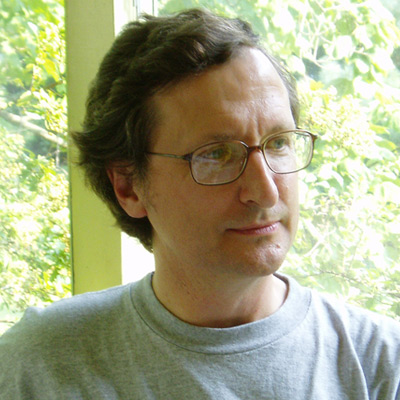 |
Prof. John Cort Bio: John E. Cort has degrees in South Asian Studies from the University of Wisconsin (B.A., 1974; M.A., 1982), and in the Study of Religion from Harvard University (A.M., 1984; Ph.D., 1989). He teaches courses on religions of Asia, as well as comparative courses on issues such as environmentalism, art, human rights and nonviolence. He is also on the East Asian Studies, Environmental Studies and International Studies program committees. Prof. Cort is a scholar of India, where he has lived for seven years over the past four decades. Prof. Cort ’s research focuses on the Jain traditions of South Asia. He has conducted extensive fieldwork in India. He is currently working on a book on Jain devotional texts and practices, with the working title of Naked Devotion. His research has been supported by grants from the American Institute of Indian Studies, American Philosophical Society, Asian Cultural Council, Freeman Foundation, Getty Foundation, Mellon Foundation, and the National Endowment for the Humanities. See more about him here Talk Title: Digambar Jains in Gujarat. Abstract: Most scholarly discussions of the Jains include the information that Śvetāmbars are found mostly in western India, in the modern states of Gujarat and Rajasthan, while Digambars are found mostly in the south, in Karnataka, and in northern and central India, in Uttar Pradesh, Rajasthan and Madhya Pradesh. The logical conclusion from this is that Digambars are not found in Gujarat. This is often attributed to the defeat of the Digambar monk Kumudacandra by the Śvetāmbar monks Devasūri Hemacandrasūri in the court of the Caulukya emperor Jayasiṃha Siddharāja in Anhilvad Patan in 1225 C.E. This is not, in fact, the case. For many centuries Gujarat was home to several very important bhaṭṭārak seats, and produced an impressive number of Digambar philosophers and literateurs, who wrote in Sanskrit, occasionally Prakrit, and in the vernaculars that eventually became Hindi and Gujarati. In this paper, I present an initial overview of the Digambars in Gujarat. I look at contemporary location and caste composition of the Digambar community, and at the historical evidence as found in the material record of temples and inscriptions, and in the literary record of texts. My aim is to show that the Digambars in Gujarat constitute another area of Jain Studies in need of scholarly attention. |
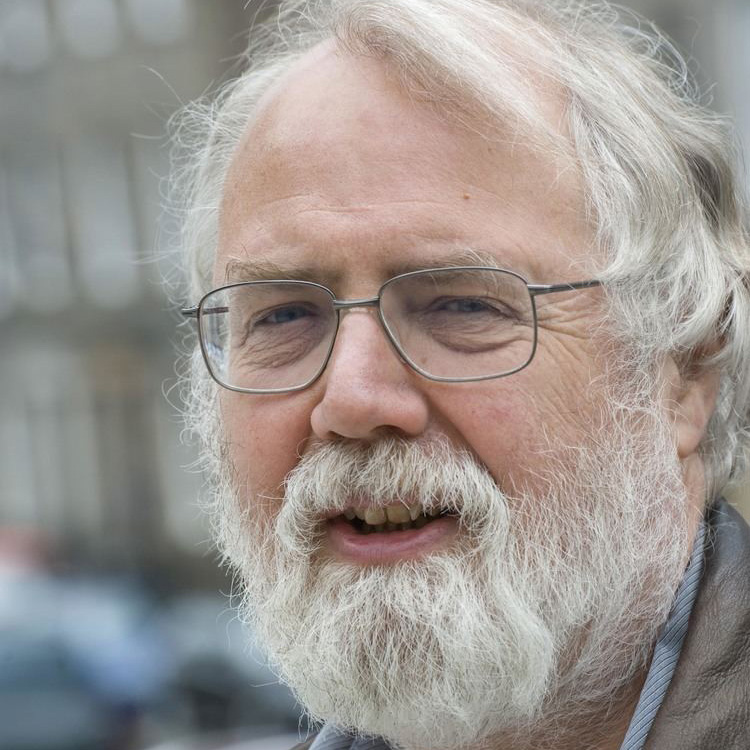 |
Prof. Paul Dundas Bio: Paul Dundas is a scholar and Reader in Sanskrit language in the University of Edinburgh. His main areas of academic and research interest include Jainism, Buddhism, classical Sanskrit literature and Middle Indo-Aryan philology. He is regarded as one of the leading scholars of the world in Jain studies. He is currently a member of the Council of the Pali Text Society. See more on him here. Talk Title: Hemacandra Maladharin's Allegorical Narratives. Abstract: 'The Śvetāmbara Jains seem to have been the first in early India to develop allegory as a significant literary genre. This paper will highlight the hitherto unacknowledged contribution to Jain allegorical fiction of the twelfth century monk Hemacandra Maladhārin and will consider the extent to which he incorporates innovative features.' |
|
Dr. Peter Flügel Bio: Dr Peter Flügel (MA Dr Phil (Mainz)) is a lecturer in the department of the study of religions and Chair, Centre for Jaina Studies at SOAS. He is an expert in Jainism and has done textual work and fieldwork. He is the Chair of the Centre for Jaina Studies and a member of the Centre for South Asian Studies and the SOAS Food Studies Centre. Apart from Jaina studies, he has broad interests in religion and society, social anthropology, sociology, philosophy and Indology more broadly. Read more on him here. Talk Title: Wishful Thinking: The Padmāvatī Shrine at Humcha. Abstract: |
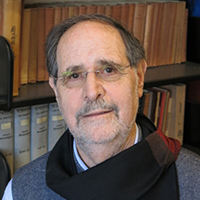 |
Prof. Robert Goldman Bio: Robert Goldman is Professor of Sanskrit. His areas of scholarly interest include Sanskrit literature and literary theory, Indian Epic Studies, and psychoanalytically oriented cultural studies. He has published widely in these areas, authoring several books and dozens of scholarly articles. He is perhaps best known for his work as the Director, General Editor, and a principal translator of a massive and fully annotated translation of the critical edition of the Valmiki Ramayana. His work has been recognized by several awards and fellowships including election as a Fellow of the American Academy of Arts and Sciences. Talk Title: Ahiṃsā Warriors: Epic Heroes and Avatāras in Jaina Narrative Literature. Abstract: Jainism is deservedly well known as the religious tradition with the most rigorous ethical stance against any form of injury (hiṃsā) to living beings. Yet, Jaina authors from antiquity onward have demonstrated a fascination with the popular warrior heroes of the Sanskrit epic and purāṇic tale cycles, heroes who are noted for, among other things, their ability to unleash massive forms of violence on humans and animals alike. This paper explores the seeming contradictions inherent in Jaina authors’ repeated and enthusiastic appropriation and revalorization of some of these most seminal and influential literary and religious figures from the early Sanskrit canon, specifically some of the major characters of the three prasthāna-s of the smṛti literature the Rāmāyaṇa, the Mahābhārata and the Bhāgavata Purāṇa. My intention is to examine why and how the Jain authors of their own purāṇas repeat and modify the inherited narratives to both provide exemplars of idealized Jaina laymen while at the same time seeking to denigrate and undermine the popular narratives found in the emerging Vaiṣṇava canon. |
 |
Prof. Phyllis Granoff Bio: Phyllis Emily Granoff is a specialist in Indic religions. Phyllis Granoff joined the Yale faculty on July 1, 2004. She previously taught at McMaster University, Hamilton, Ontario, Canada and has held visiting positions at the Ecole Pratique des Hautes Etudes en Sciences Sociales, Berkeley, and Harvard. She has done research in all of the classical religions of India--Buddhism, Hinduism, Jainism and has published articles on Indian art and literature. Her interests include contemporary Indian literature and she has published translations of short stories from Bengali and Oriya. She edits the Journal of Indian Philosophy. Her recent publications include The Victorious Ones: Jain Images of Perfection, an edited volume that accompanied the exhibition on Jain art that she curated at the Rubin Museum of Art. With Koichi Shinohara she has edited a number of volumes, including Images in Asian Religions and Pilgrims, Patrons and Place. Most recently they have edited a volume of essays on sin in Asian religions, to appear shortly from Brill. Among her current research projects are a study of Jain and Buddhist monastic rules on the treatment of the sick and a comprehensive examination of Jain manuscripts in American museum collections. She serves as senior advisor to the Jain Heritage Preservation Project which is run by the Jiv Daya Foundation in Dallas, Texas. Read more about her here. Talk Title: The Stages of Life: In Honor of Professor Jaini Abstract: In this paper I examine one exchange in the complex debate between Banarasidass and Meghavijaya (1653-1704) over the ritual treatment of images of the Jina. I argue that Meghavijaya, drawing on hymns and descriptions of rituals in Digambara literature, allows that the Jina image represents any and all of the stages in the life of the Jina. This, I suggest, asks us to nuance our own viewing of Jina images, and in particular to redress the great division between narrative and icon that we so often make in our discussions of Buddhist and Jain art. |
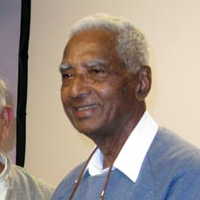 |
Prof. Padmanabh Jaini Bio: Padmanabh S. Jaini is Professor emeritus of Buddhist Studies and co-founder of the Group in Buddhist Studies. Before joining UC Berkeley in 1972, he taught at the School of Oriental and African Studies, London and at the University of Michigan, Ann Arbor. He is the author of numerous monographs and articles on both Buddhism and Jainism. In the field of Buddhist Studies he is particularly well known for his work on Abhidharma and for his critical editions of the Abhidharmadīpa (a Vaibhāṣika treatise), the Sāratamā (a commentary on the Aṣṭasāhasrikā Prajñāpāramitā), and a collection of apocroyphal Jātakas, the Paññāsa-Jātaka, that appeared in four volumes (text and translation). His collected essays have appeared in two volumes, and, recently, he has been honored by a Festschrift (2003) with contributions on early Buddhism and Jainism. Talk Title: A South Indian Jaina rathayātrā in Tulu Nadu Jain Bramanical priests and brahminisation of temple rituals. Abstract: The priests of the Digambar Jain Temples in Tuḷunāḍu of Karnataka, locally called "Indras," are pemanently attached to a temple, and are known as "Jaina-Brāhmaṇas." The rituals they perform closely resemble those observed in Hindu temples. This can be demonstrated by a look at a week-long Jaina Ratha-yātrā festival, held annually, at a small but exclusively Jain town called Nellikar, situated around a Temple (c. 1700 C.E.). Have these priests always been Jains, as they are believed to be? A study of some inscriptional and literary sources shows that Vedic Brāhmaṇas of high standing and learning became (around the ninth century) converts to the Jaina Faith, some becoming temple priests, others Jain ascetics (munis), while a few eminent poets emerged producing classical works in Kannada. |
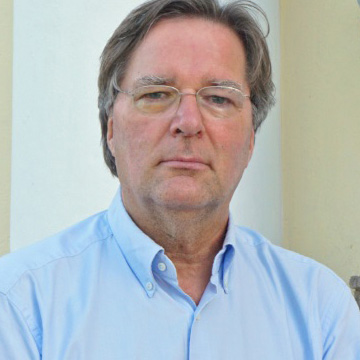 |
Prof. Olle Qvarnström Bio: Olle Qvarnström is Professor of the History of Religions at Lund University, Sweden. One of the foremost scholars of Jainism, his work explores the intersections of Jain, Buddhist, and Hindu traditions. His publications include The Yogasastra of Hemacandra: A Twelfth-Century Handbook on Svetambara Jainism; Hindu Philosophy in Buddhist Perspective; and two edited volumes, Jainism and Early Buddhism: Essays in Honor of Padmanabh S. Jaini and Approaches to Jaina Studies: Philosophy, Logic, Rituals and Symbols. Read more about him here. Talk Title: Jain and Buddhist critique of Samkhya philosophy. Abstract: |
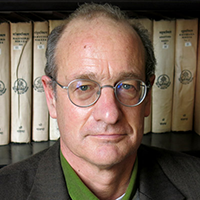 |
Prof. Alexander von Rospatt Bio: Alexander von Rospatt is Professor for Buddhist and South Asian Studies, and director of the Group in Buddhist Studies. He specializes in the doctrinal history of Indian Buddhism, and in Newar Buddhism, the only Indic Mahayana tradition that continues to persist in its original South Asian setting (in the Kathmandu Valley) right to the present. His first book (which won the prestigious Waldschmidt Prize and is forthcoming as a US reprint in 2013) sets forth the development and early history of the Buddhist doctrine of momentariness. His new book "The Svayambhu Caitya and its Renovations" deals with the historical renovations of the Svayambhū Stupa of Kathmandu. Based on Newar manuscripts and several years of fieldwork in Nepal, he reconstructs the ritual history of these renovations and their social contexts. Prof. von Rospatt is a leading authority on Newar Buddhism, and this book complements numerous essays he authored on various aspects of this tradition, including its narrative literature, and its rituals and their origins and evolution. He currently has two related monographs under preparation, one dealing with the mural paintings and other visual depictions of the Svayambhupurana, the other with the life-cycle rituals of old age as observed among Newars and other South Asian communities. In addition he is directing a research project dedicated to the historical study of colophons and other paratexts found in Medieval Nepalese Buddhist Manuscripts. Read more on him here. Talk Title: Beyond Jainism. Reflections on the survival of Indic Buddhism in Nepal. Abstract: In his influential essay 'The Disappearance of Buddhism and the survival of Jainism in India: A study in Contrast' (1980), Prof. Jaini has examined the question why Jainism did not share the fate of Buddhism but by contrast persisted beyond the thirteenth century to the present. Expanding upon this approach my paper will turn to the survival of Indic Mahāyāna Buddhism in Nepal, and probe into the factors that allowed for Buddhism there to maintain its distinct identity even while deeply being affected by the Hindu traditions with which it has always coexisted at close quarters. Particular attention will be paid to social factors, including the transformation of monkhood into a hereditary caste. |
 |
Dr. Kristi Wiley Bio: Dr. Kristi Wiley (Ph.D., University of California at Berkeley) is a lecturer in the Department of South and Southeast Asian Studies at the University of California at Berkeley. She has taught Sanskrit and courses on Indian religions. She is the author of the Historical Dictionary of Jainism. She has also published a number of articles related to karma theory, her area of specialization in Jainism. Some of her other publications include articles in Approaches to Jaina Studies (ed. N. K. Wagle and Olle Qvarnstrom), Doctrines and Dialogues (ed. Peter Flugel), Essays in Jaina Philosophy and Religion (ed. Piotr Balcerowicz), Jainism and Early Buddhism (ed. Olle Qvarnstrom), Jainism and Ecology (ed. Christopher Key Chapple), and Philosophy East and West. Talk Title: Nigodas Revisited Abstract: Discussions regarding the various forms of life inhabiting the universe are found in the earliest extant texts of the two sectarian traditions. In Jainism, understanding what constitutes the world of the living and non-living is important because without this knowledge, it is impossible to know the extent to which one’s actions have the potential to cause harm to other living beings and to live in a manner that is conducive to shortening one’s suffering in saṃsāra. Among the one-sensed life-forms (ekendriyas), the most rudimentary is a minute type of vegetable life called nigoda. This paper will build upon the writings of Professor Jaini in his Jaina Path of Purification and in his article “Karma and the Problem of Rebirth in Jainism” in order to enhance our understanding of this life-form. |
